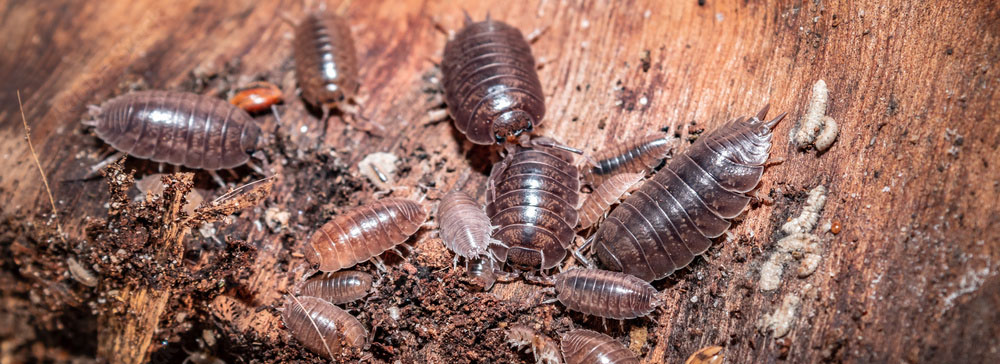Recent rains in south-central Kansas have heightened awareness of a crop pest that many know best by its rhyming nickname.
Pillbugs — which many may know by the nickname, Roly Poly — thrive in wet conditions and undisturbed soil, said Kansas State University crop entomologist Jeff Whitworth, noting that they are not an insect.
“They’re crustaceans; they’re more closely related to crayfish, crabs and lobsters,” Whitworth said. “That means they have to have a lot of moisture. Anytime you have a pillbug problem, that means you’re getting good rain, irrigating well or your soil is holding the water well.”
He added: “They must have free moisture to breathe; they breathe by means of gills. Primarily, they started becoming a problem when farmers started going to no-till or reduced tillage farming practices because they hold the moisture in the soil.”
Pillbugs, a pest native to Kansas, can reproduce prolifically under wet weather conditions, Whitworth said.
“There will be anywhere from 1-3 generations per year. Each female can produce at least 100 eggs during each reproductive period,” he said. “I’ve gone out and looked at no-till fields with pillbug problems, and I’ve found 600-700 of them per row foot.”
Oftentimes, pillbugs target soybean fields because their hatching period coincides with planting.
“After over-wintering, they’ll mate, and they’ll produce eggs. The eggs are carried by the female and the young eventually get into the soil around mid-May when it is soybean planting time,” Whitworth said. “As soybean seeds germinate, pillbugs start feeding on them. They will clip off the plant causing it to die.”
Whitworth said treating a pillbug infestation with a foliar spray – a liquid that’s applied over plant leaves – may be less effective in no-till or reduced tillage fields.
“They’re pretty easily managed by foliar sprays,” Whitworth said. “The problem in no-till fields is that they’re underneath the surface and the organic matter, so when you go over the top to spray them, the organic matter is intercepting the insecticide. So, the spray doesn’t get down into the soil where the pillbugs are feeding on the seeds.”
Producers may limit the presence of pillbugs in their soybean fields by altering their planting schedule.
“Change your planting date,” Whitworth said. “Back it up a couple of weeks or move it ahead a couple of weeks, according to the weather and if producers are able. But the easiest way to treat a pillbug infestation is by waiting a couple of weeks and not adding any additional water to a field.”
Pillbugs also reside in other crop fields, according to Whitworth.
“Most growers think they only eat soybeans; they don’t from my experience. They eat any green, succulent plants that they prefer over the normal old dried organic decaying matter in the soil,” he said.
More information about the effects of pillbugs on crop production is available at local extension offices in Kansas.



